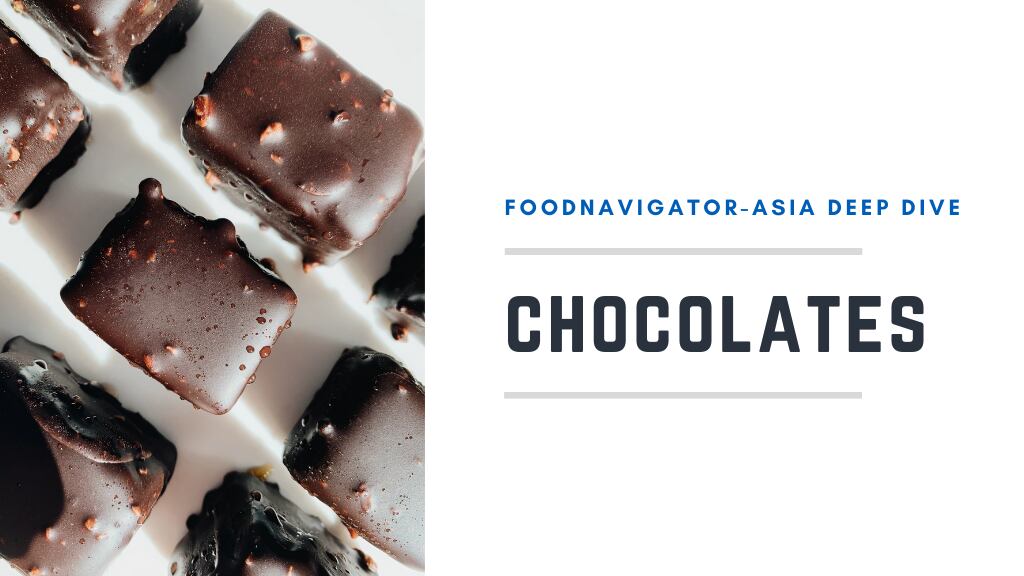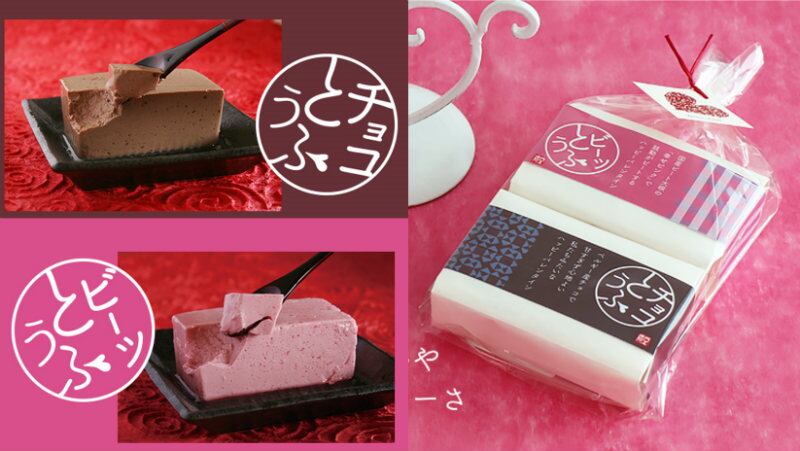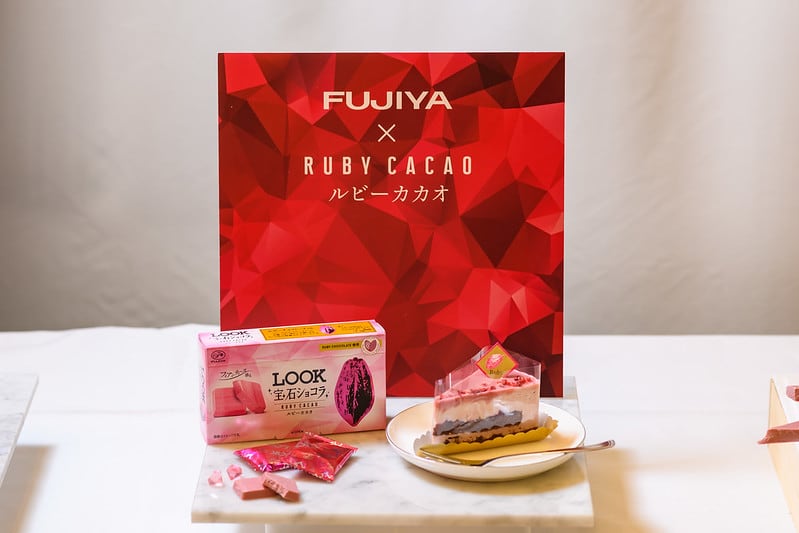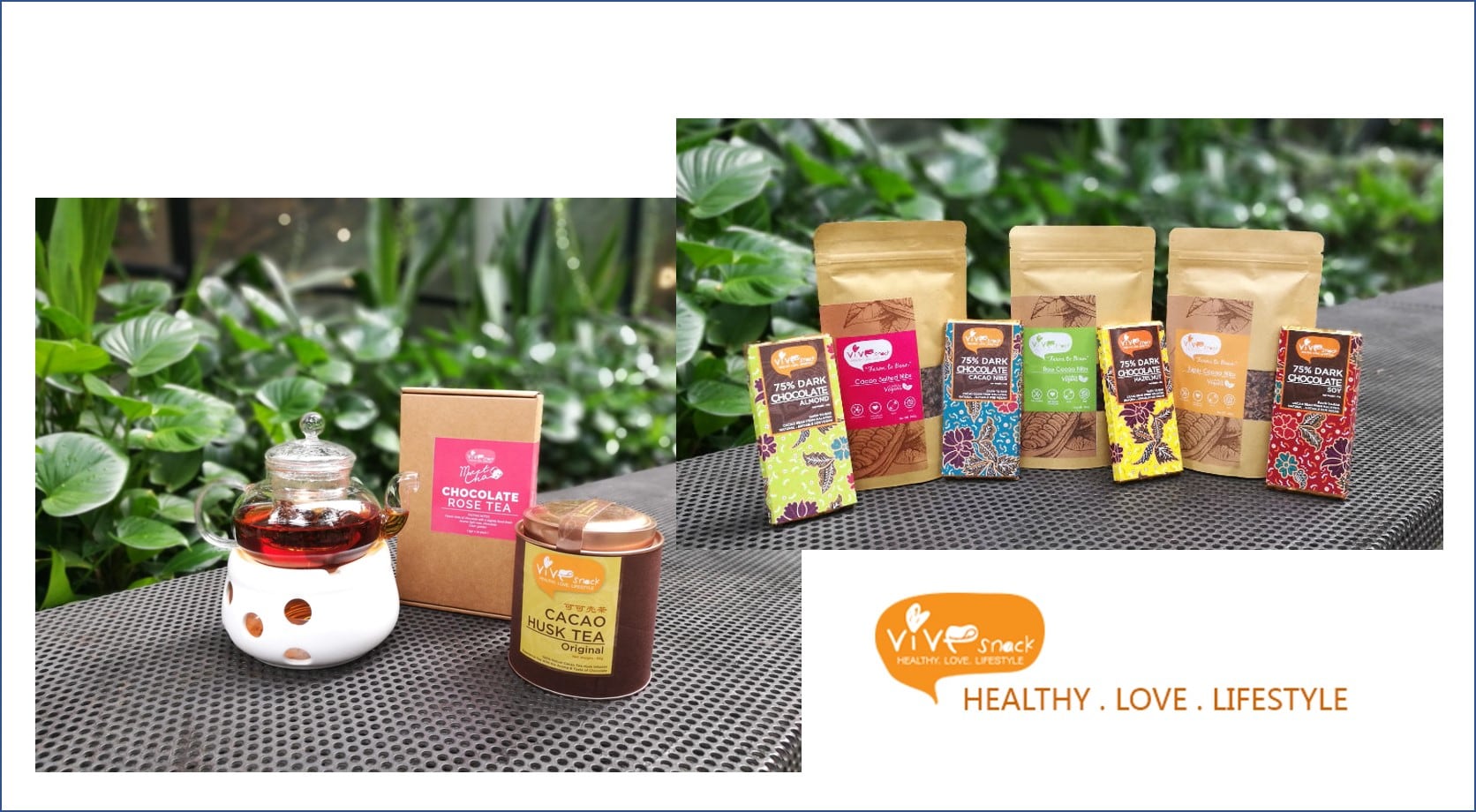According to data from research firm Mordor Intelligence, the chocolate industry in APAC is expected to hit US$32bn in value by 2024, growing at a CAGR of 6.3% from 2019. India is predicted to take the lead here with some 21.7% growth overall.
In 2017, Euromonitor also saw that chocolate made from sustainable cocoa accounted for 8% of the total global retail market – the percentage itself may not seem high, but it still made up some US$8bn worth of the market, and this number is expected to grow much further moving forward too.
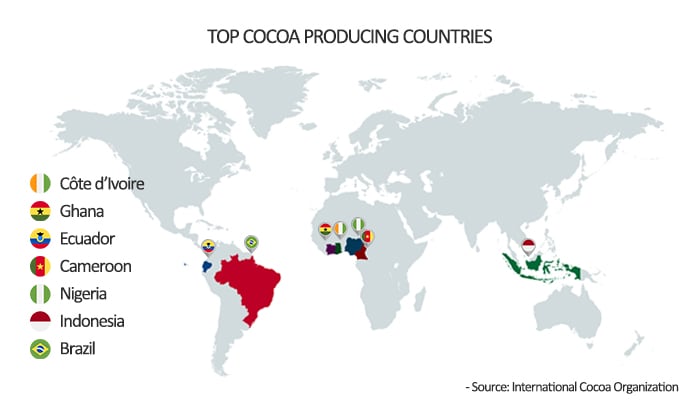
According to Lumina Intelligence, the F&B industry has committed at least US$2bn towards cocoa sustainability up to 2030, with the majority of industry pledges on cocoa (21%) focusing on commitments towards ‘no deforestation & agroforestry’.
In its Food & Drink Sustainability 2019 report, the insights firm also found that more money has been dedicated to cocoa than other commodity among the companies it analysed, many of which were big names such as Nestle, Mondelez and Mars.
This shows that major chocolate companies have taken note of this trend, and implemented various forms of sustainability commitments, strategies and the like.
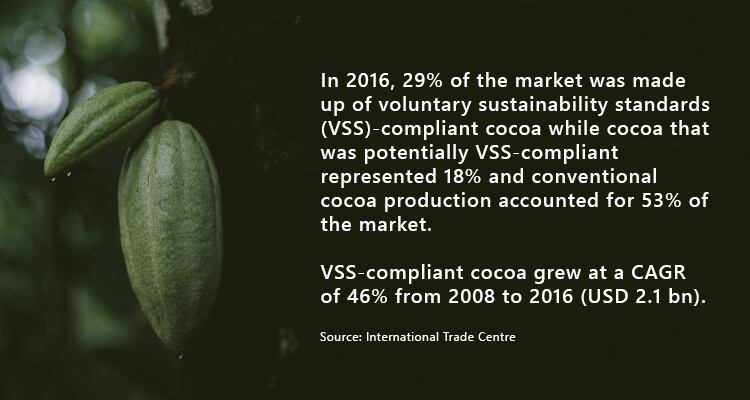
This includes all of the firms listed on Candy Industry’s top five chocolate-manufacturing confectionary companies list for 2020: Mars Wrigley Confectionery (US$18bn), Ferrero Group (US$13bn), Mondelez International (US$11bn), Meiji (US$9bn), and Hershey (US$7bn).
Within the industry, sustainability claims surround what are called the Voluntary Sustainability Standards (VSS), which are basically the ‘holy quadrant’ of four sustainability standards: UTZ Certified, Rainforest Alliance, Fairtrade and Organic.
Each is represented by their own label, the on-pack display of which is expected to heighten consumer appeal.
Speaking to FoodNavigator-Asia, Mars Asia Director for Cocoa Sustainable Sourcing Fay Fay Choo said that sustainability has become a 'critical business imperative' for the company.
"Indonesia used to be the third largest producer of cocoa globally after Ivory Coast and Ghana but in the last eight years alone it’s lost about 67% of production, from about 600,000 tons to now under 200,000 tons," she told us, adding that this has been driven by factors such as ageing trees, ageing farmers, pest and disease pressures etc.
"So, we’ve got this regional imbalance which is clearly not sustainable, and for a business [such as Mars] to have long term growth plans, we have to be thinking about securing supply and growing more cocoa.
"With the reduction in cocoa supply [here in Asia] and other issues we face, we see that sustainability has become a critical business imperative and [a part of our business strategy] to thrive in the long term."
Mars aims to hit a target of becoming '100% responsible' by 2025, a feat that would cover the areas of: Protecting children, preserving forests, and improving farmers’ income.
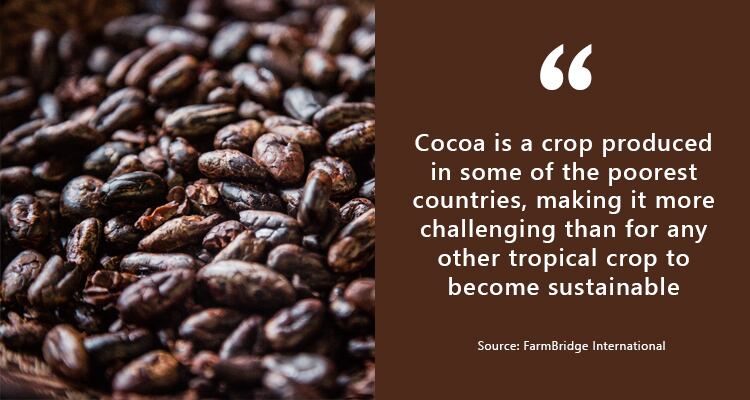
The Cocoa Association of Asia (CAA) represents the industry in the region, comprising of big-name members such as Mars, Mondelez and Nestle. Speaking to FoodNavigator-Asia, CAA Vice President Quek Ngee Chuan said that sustainability is a big trend in the Asia Pacific region, mainly because it is ‘what consumers want’.
“The younger generations today actually ask for sustainability efforts to be [made by companies]. Some 80% of consumers today also want the company they buy from to invest in sustainability,” he told us.
“[Chocolate companies] such as all our members have sustainability embedded into their operations across Asia [as a result of this].”
Watch the video below to find out more about CAA’s observations about the Asian chocolate industry.
Bean-to bar vs Tree -to-bar
Another big trend within the APAC chocolate industry is that of bean-to-bar or tree-to-bar products, both of which are related to how the final flavour of cocoa beans, and thus the final chocolate product, turns out.
The bean-to-bar process mainly involves control of cocoa roasting and grinding steps to change the flavours of the chocolate product, whereas the tree-to-bar process would include control of the prior fermentation and drying steps, similar to wine and coffee production.
Taiwanese tree-to-bar chocolate company Fu Wan Chocolate’s Director Audrey Lin told us that the trend for chocolates manufactured using such processes is growing rapidly in the region.
“[For Fu Wan, what we do is] take the fresh cocoa pods from the tree, ferment, and sundry the cocoa beans. The bean-to-bar process then follows, which is roasting the beans, winnowing beans off the husks, grinding the cacao nibs, tempering and moulding,” she explained.
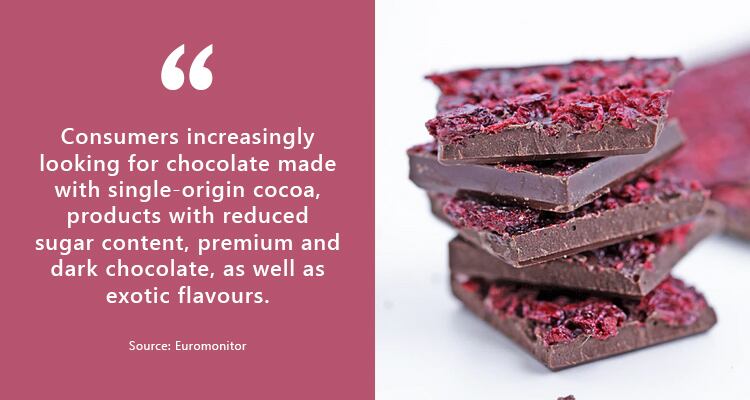
In keeping with another chocolate trend, that of single-origin, Lin said Fu Wan Chocolate’s bars are made with cocoa beans coming solely from Ping Tung, Taiwan – which also adds unique flavour to their chocolates.
She added that the flavours of their cocoa beans are fruity, caramel, vanilla, ‘which are unique (to us) because it comes from a single origin bean’.
In addition to flavour differentiation coming from cocoa origins and processing, she also said that Asian consumers are now seeking more exotic and adventurous (added) flavours in their chocolates.
“Asian chocolate makers [have responded by] producing chocolates with more exotic and surprising (maybe bizarre) flavours as compared to the more traditional flavors from US and European chocolate makers,” said Lin.
Fu Wan Chocolate’s main products are dark, white and milk flavoured chocolate bars, as well as unique tea-infused flavoured chocolate.
In Asia overall, Lin observed a growing demand for chocolate products, especially in Hong Kong, Malaysia and Singapore.
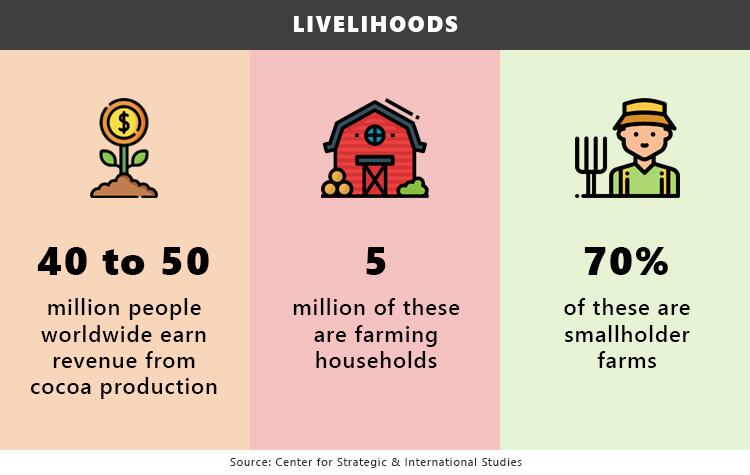
‘Young’ vs ‘mature’ chocolate markets in Asia
Taiwan has not traditionally been known for cocoa production and is considered a relatively ‘young’ addition to the market in this sense, but the local government is attempting to slowly change this.
“Throughout the years, betel nut farming has harmed the soil, so the Taiwanese government has encouraged betel nut farmers to plant cocoa tree instead, to avoid further destroying the land,” said Lin.
However, the cost of growing in Taiwan is more expensive than other cocoa producing countries such as Indonesia, Cote d’Ivoire and Ghana which provides some concerning challenges on this front.
“Taiwan is a developed country and land is limited. The average salary is also higher, which causes the cost of cocoa to become very high,” Lin added.
That said, she believes Taiwanese cocoa has potential in the future due to mature farming skills in the country, making consistent improvements and the production of good quality cocoa fruits.
In contrast, Japan is a relatively ‘mature’ market when it comes to chocolates. According to Barry Callebaut’s Managing Director for Japan Pascale Meulemeester, this can be attributed to Japanese consumers’ open-mindedness and curious mindsets.
New products and developments
For example, although Barry Callebaut made a good deal of effort to market its new pink ruby chocolate, ‘the world’s fourth type of chocolate after dark, milk and white’, in APAC’s China, India and Indonesia, Japan leaped past these to emerge as one of ruby chocolate’s biggest markets so far.
“For decades, the Japanese consumers’ preferences and cultural inclinations have trail-blazed trends in the region and beyond,” said Meulemeester.
“In the past year alone, we have witnessed the market embracing Ruby as a breakthrough innovation and is leading the world with ideas and applications that are setting a new standard for creativity and expertise in the market.”
Ruby chocolate is naturally coloured pink, and so far Japanese firms have utilized it in making pink cakes, pink bonbons, pink chocolate bars.

Other Japanese creations in the industry have included a healthy, natural, vegan chocolate made with six ingredients: cacao, coconut, chicory, vanilla, hemp seed and monk fruit.
Hisae Mukuno, Founder and CEO of True Food & Design, the firm that created this, told us that this ‘healthier chocolate’ aimed to break the stereotype of chocolates being unhealthy.
“In Japan, there are not many vegan chocolates in the market,” he said.
“We believe our products can make an impact on the market as a new type of chocolate.”
Outside of Japan, Australian start-up Bite Society has also created a range of vegan chocolate rice balls targeted at the plant-based crowd as well as chocolate fans.
Overall, it looks as though the direction that the chocolate industry is going in is as predicted by the CAA, with sustainability and health likely to become more and more important to consumers as trends in the market evolve.


